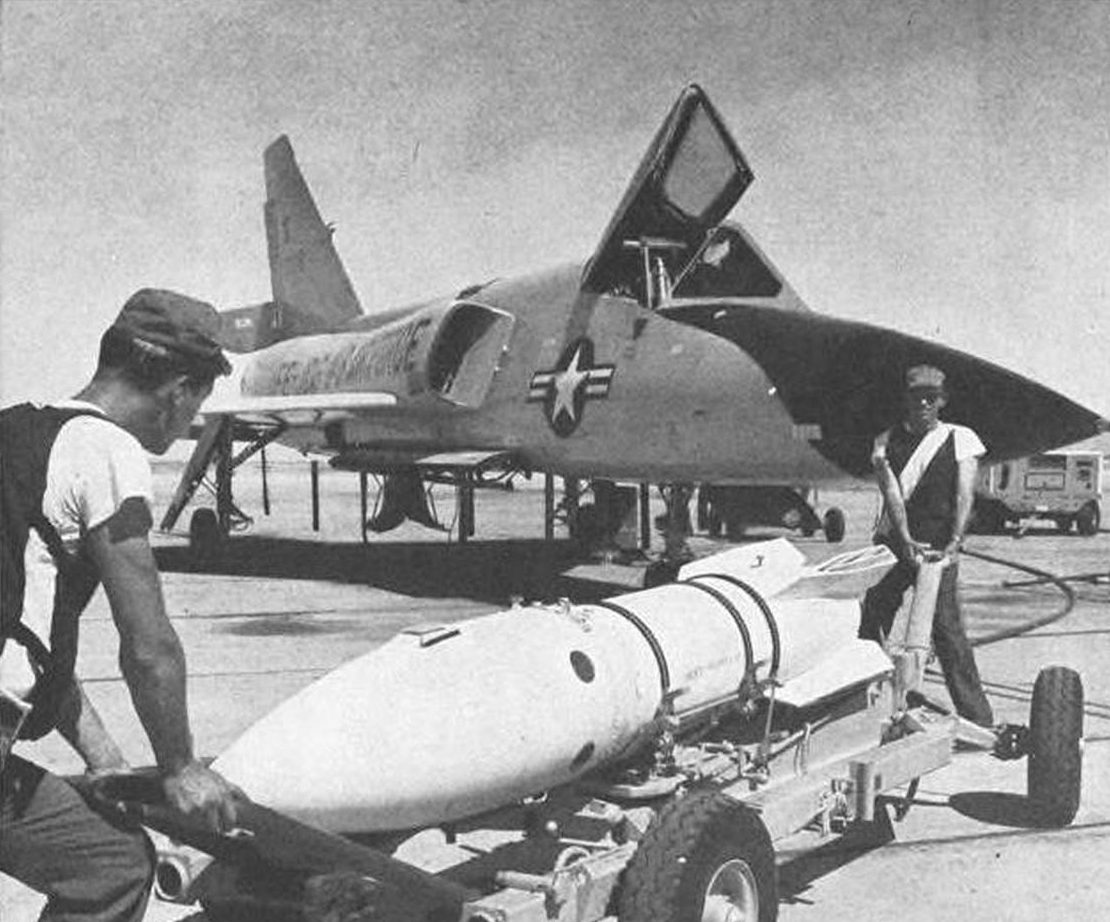American black bears, the shy species present in northern Minnesota, are mostly harmless to humans. Except for the one in Duluth that could've triggered nuclear apocalypse.
Let’s rewind to fall 1962. Noted Duluthian Bob Dylan had just released his self-titled debut album; McDonald's hamburgers were 15 cents; and the looming threat of a nuclear holocaust gripped the U.S. and the Soviet Union, as the Cuban Missile Crisis had raised Cold War tensions to a boiling point by mid-October.
In response to Soviet missiles appearing just outside of Miami, the U.S. declared DEFCON 3: the halfway point to nuclear war that required the Air Force had be ready for almost instant deployment. Throughout the northern U.S., the Air Force scattered 161 F-106 Delta Dart interceptors capable of firing air-to-air nuclear missiles equipped with 1.5-kiloton warheads. The idea, explains Stanford University political science professor Scott Sagan, was to take out entire squadrons of Soviet aircraft with airborne nuclear explosions.
"This was not a completely un-dangerous strategy, because you’d be exploding nuclear weapons in the air," Sagan tells us. "These were single-pilot aircraft, and the only thing that would stand between the use of that weapon was the fighter pilot’s determination and training."
So, basically the opening scene of Dr. Strangelove but... ya know, horrifyingly real.
Things got particularly wild on Oct. 25 at the Duluth Air Force Base. In his 1993 book The Limits of Safety, Sagan unearthed accounts from that day that tell of a shadowy figure attempting to scale the base’s fence around midnight. The guard allegedly shot at the suspected saboteur, who scurried away from the base. But the alarm had been sounded, putting other bases on high alert for Soviet intruders. At Volk Field Airbase in central Wisconsin, however, a wiring mistake set off the wrong alarm.
"They were supposed to have a sabotage alarm, instead the Klaxon went off, and that was the sign a Soviet attack had occurred," Sagan says. "So the pilots there, fully thinking an attack occurred, started their engines."
Fortunately, a commander at Volk Field called Duluth for last-second confirmation that nuclear war was, in fact, imminent. After receiving the correct information, Sagan says, that commander sped onto the runway with lights flashing shouting "Don't launch! Don't launch!"
What sparked the narrowly averted crisis?
"Turns out it was a bear climbing the fence—not a Soviet bear, not a Russian bear," Sagan says with a chuckle. "I would say it’s the most bizarre [nuclear war close call] I've studied."
"That was serious business," Dan Barry, a pilot who waited on the tarmac at Volk Field that night, told the La Crosse Tribune in 2009. "We'd never flown with a nuke on board… it was really serious. I can remember almost expecting to see inbound nuclear missiles."
No one currently associated with the Wisconsin National Guard has any insight into the near-disaster, a representative tells us. Sagan, who discovered the bear incident via Freedom of Information requests and declassified documents, suspects that's likely just due to the passage of time.
"It would've been many steps to all-out nuclear war," he notes. "But once you have nuclear weapons flying around the air, with only a single pilot controlling them, you’re in a risky situation."
With innumerable terrors to keep one up at night—climate change, income inequality, this COVID-19 thing—the still-looming specter of nuclear annihilation easily falls out of mind, almost a quaint callback to 20th century concerns. But nine known countries—U.S., Russia, U.K., France, China, India, Pakistan, North Korea, Israel—still maintain nuclear arsenals. If one leader trips, if one button slips, if one bear, um, grips the wrong fence: see ya, humanity.
"The trouble is, the weapons did not go away [after the Cold War]," famed whistleblower Daniel Ellsberg recently said on the podcast Useful Idiots. "The threat is as dangerous as it's ever been, and that goes back 60 years."
Why are nuclear stockpiles being maintained and modernized, even though wide-scale nuclear war could eliminate 90 to 98 percent of humanity? To quote nuclear safety technician Carl Carlson: It’s best not to think about it.
But Ellsberg, who thinks a lot about it, blames the military-industrial complex; taxpayers will spend around $634 billion over the next decade to maintain the U.S. nuclear arsenal, the Congressional Budget Office estimates, thus lining the pockets of all sorts of ancillary players.
"I believe we should move, slowly but surely and safely, to an agreement that we could all get rid of our nuclear weapons," Sagan says, noting that he's not in favor of unilateral disarmament. "People aren't afraid anymore, because they think that because we haven't had a nuclear conflict, that the problem’s gone, and it’s not—there’s an inherent fragility to the system, it's like walking across thin ice."







